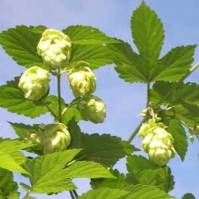Hops may reduce Clostridium in poultry

Hops contain substances that control pathogenic bacteria in the intestines of chickens, Agricultural Research Service (ARS) scientists and cooperators have reported.
Certain bacteria in the intestines of chickens not only can cause
contamination of meat during processing, but also may pose major production
losses by causing disease in the broiler chicken.
Currently, poultry
producers use sub-therapeutic amounts of antibiotics in poultry feed as growth
promoters and to control bacterial pathogens or parasites. However, bacteria can
become resistant to the antibiotics, so ARS scientists are looking for
alternatives.
The hop plant (Humulus lupulus) contains bitter
acids known to be potent antimicrobials. One of these compounds, lupulone, was
thought to control levels of the disease-causing agent Clostridium
perfringens in chickens.
ARS scientists, working under a cooperative
research agreement with hops producer Hopsteiner in Yakima, Wash., examined the
effect of feeding different concentrations of lupulone to broiler chickens to
determine the compound’s impact on Clostridium populations in the
intestinal tracts of birds inoculated with C. perfringens.
A
research team led by microbiologist Gregory Siragusa, formerly of the ARS
Poultry Microbiological Safety Research Unit in Athens, Ga., in collaboration
with Gerhard Haas of Fairleigh Dickinson University in New Jersey, delivered
different concentrations of lupulone via water to chickens inoculated with C.
perfringens. After 22 days—the timeframe associated with clostridial disease
in broiler chickens—C. perfringens counts were significantly reduced in
the lupulone-treated group compared to another group of chickens that did not
receive the lupulone treatment. The reductions ranged from 30 to 50 percent.
According to the team, the potential for lupulone as an antibiotic alternative
in poultry rearing is feasible based on these results.
This research was
published in the Journal of Antimicrobial
Chemotherapy.











